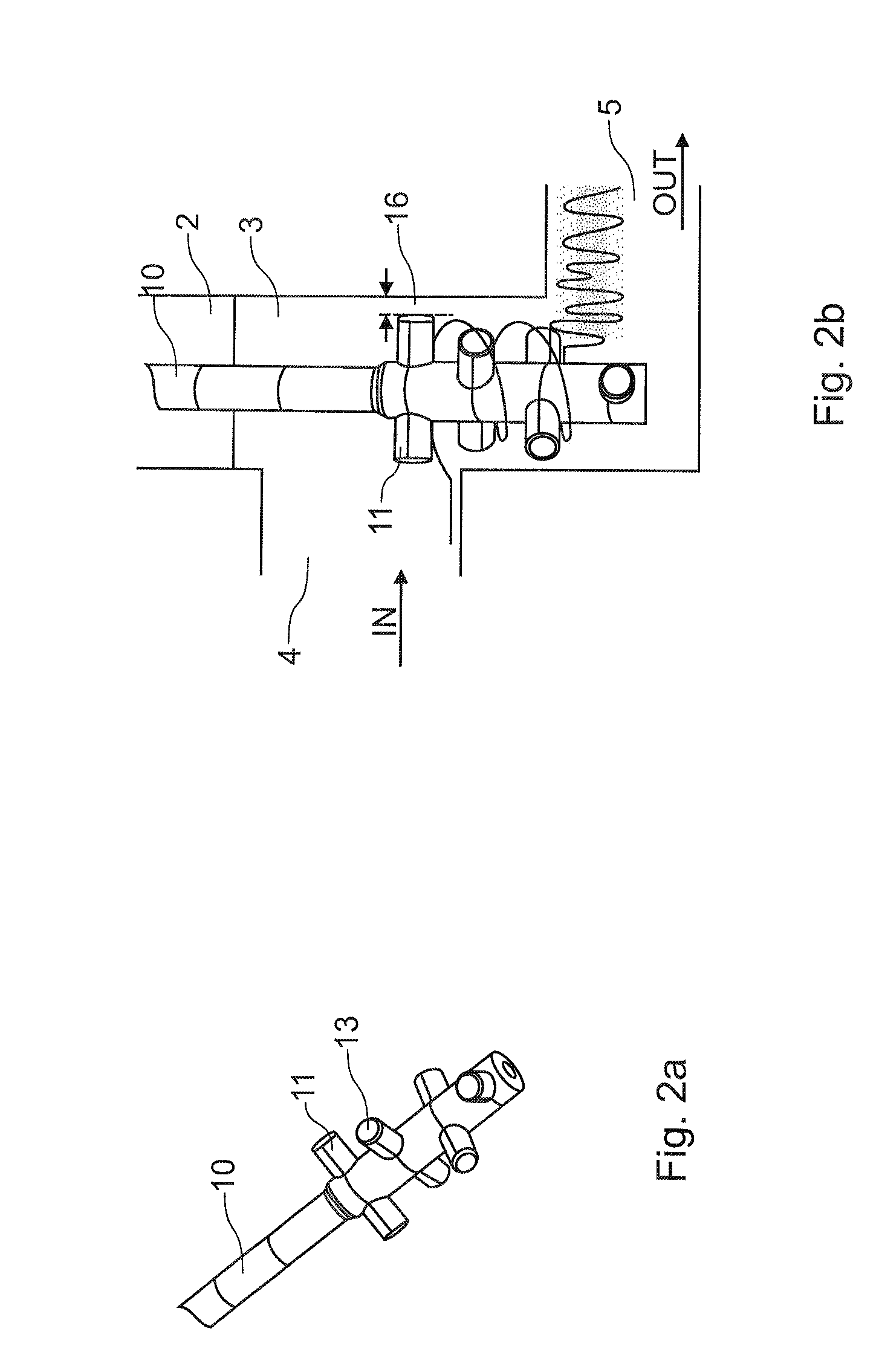Method and device for homogenizing glass melt
a technology of glass melt and homogenizing device, which is applied in the direction of glass making apparatus, manufacturing tools, transportation and packaging, etc., can solve the problems of uncontrollable geometric variation during hot finishing process, affecting optical depiction, and stirring coming into contact with the stirrer
- Summary
- Abstract
- Description
- Claims
- Application Information
AI Technical Summary
Benefits of technology
Problems solved by technology
Method used
Image
Examples
Embodiment Construction
[0039]According to FIG. 1, a stirrer, which will be described hereinafter in more detail with reference to FIGS. 2a and 3a, comprising a plurality of stirrer blades 11 is disposed in a generally cylindrical stirrer vessel 2 in a point-symmetrical configuration. A glass melt 3 is received in the receptacle 2. The glass melt 3 can flow continuously or discontinuously through the stirrer vessel 2, specifically from the inlet 4 to the outlet 5. As is indicated by the arrow 12, an axial feed action is applied in the inner stirring region, between the stirrer shaft 10 and the front ends of the stirrer blades 11, which feeds the entering glass melt 3 from the upper axial end of the inner region 12 to the lower axial end thereof. This is achieved by suitably configuring the stirrer, which will be described in more detail hereinafter. The glass melt exiting at the lower axial end of the inner stirring region 12 brings about active sealing of the gap 16 between the front ends of the stirrer b...
PUM
| Property | Measurement | Unit |
|---|---|---|
| coverage | aaaaa | aaaaa |
| refractive index | aaaaa | aaaaa |
| viscosity | aaaaa | aaaaa |
Abstract
Description
Claims
Application Information
 Login to View More
Login to View More - R&D
- Intellectual Property
- Life Sciences
- Materials
- Tech Scout
- Unparalleled Data Quality
- Higher Quality Content
- 60% Fewer Hallucinations
Browse by: Latest US Patents, China's latest patents, Technical Efficacy Thesaurus, Application Domain, Technology Topic, Popular Technical Reports.
© 2025 PatSnap. All rights reserved.Legal|Privacy policy|Modern Slavery Act Transparency Statement|Sitemap|About US| Contact US: help@patsnap.com



